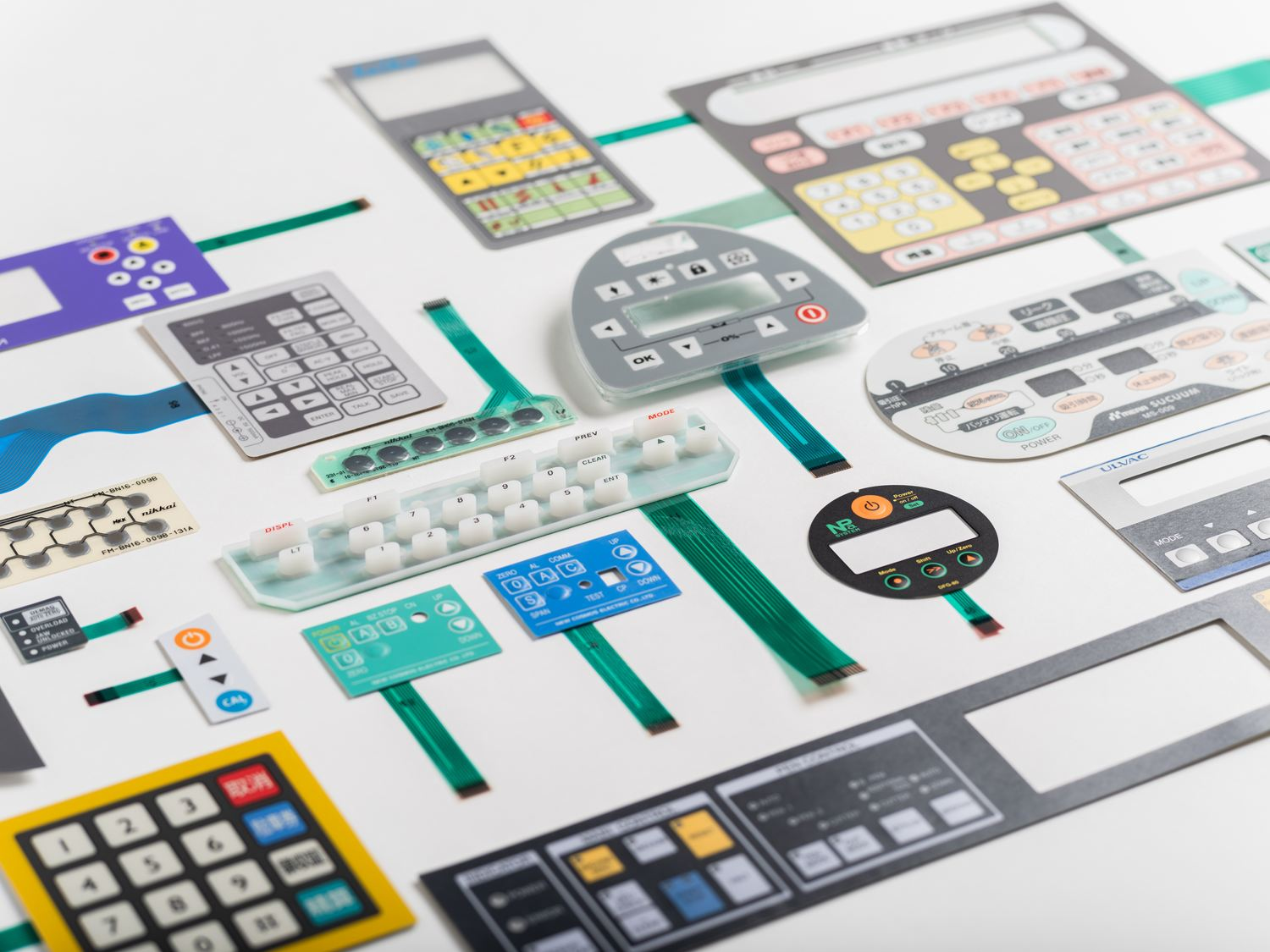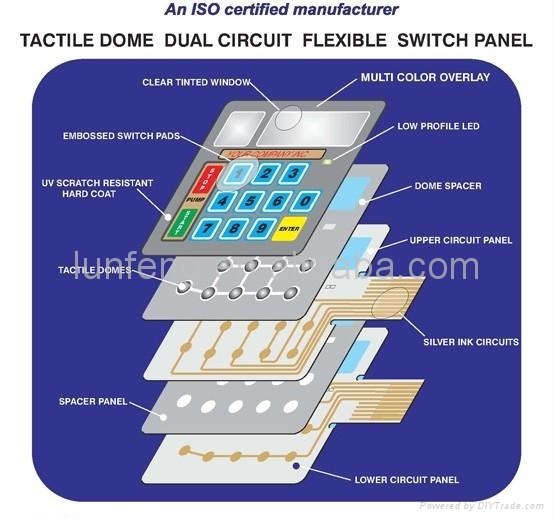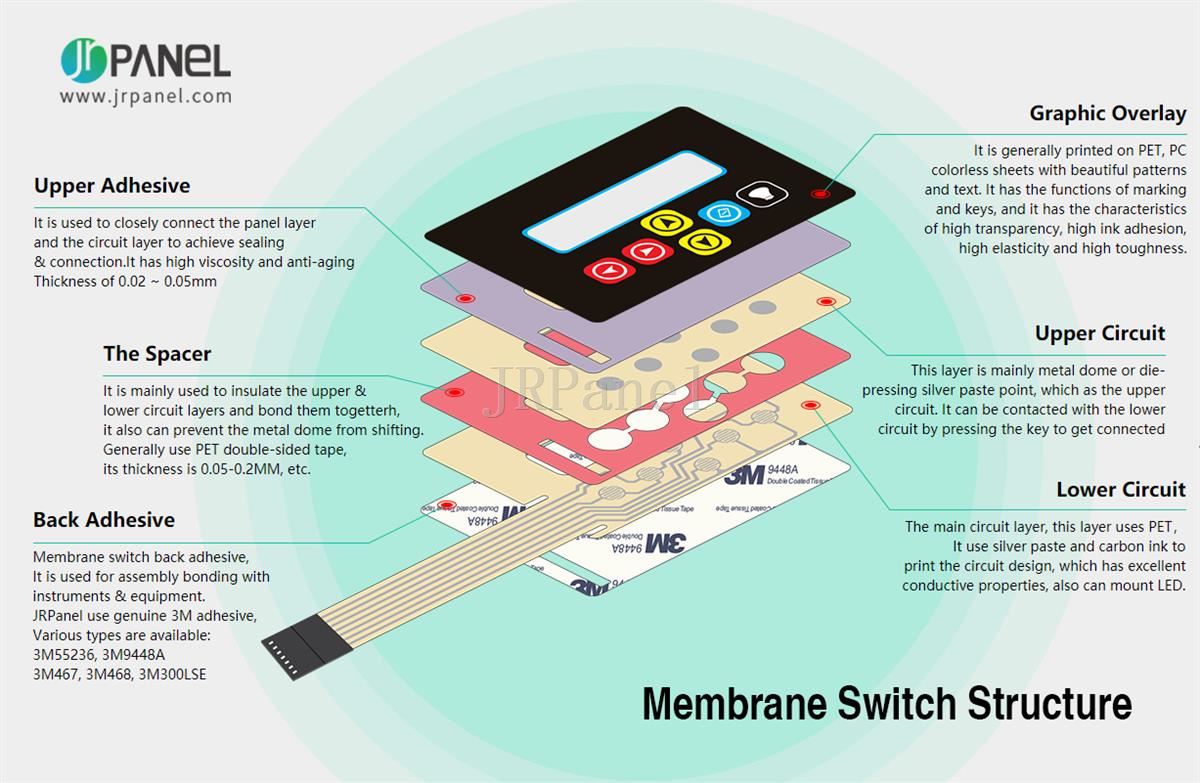Recognizing Membrane Layer Switches Over: The Secret to Resilient and Reputable Controls

What Are Membrane Layer Buttons?
Membrane switches are a sophisticated solution in the world of interface technology, combining functionality and style perfectly. These devices act as a user interface in between individuals and electronic systems, integrating several elements right into a portable format. Generally built from versatile, thin layers of products, membrane switches are designed to react to touch, making it possible for individuals to engage with equipment and digital gadgets efficiently.
The main elements of a membrane button consist of a printed circuit layer, visuals overlay, and a spacer layer that avoids unexpected activation. The visuals overlay can be personalized to show brand name identification or customer preferences, boosting aesthetics while guaranteeing usability. Membrane layer buttons are typically utilized in numerous applications, including medical gadgets, consumer electronic devices, and industrial equipment, owing to their toughness and resistance to ecological factors such as dampness and dirt.
One of the vital advantages of membrane layer switches is their ability to endure wear and tear, making them excellent for high-traffic environments. Additionally, they are lightweight and require marginal space, permitting ingenious styles in item growth. Generally, membrane switches over stand for a reliable and useful choice for contemporary electronic interfaces, marrying innovation with user-centric style principles.
How Membrane Layer Switches Work
The procedure of membrane changes joints on an easy yet efficient system that translates user input into digital signals. These buttons are composed of numerous layers, generally consisting of a visuals overlay, a spacer layer, and a circuit layer. When an individual presses the switch, the leading layer deforms, allowing a conductive component in the circuit layer to make contact with a corresponding conductive pad on the bottom of the graphic overlay. This contact shuts the circuit and sends a digital signal to the device, showing that the switch has actually been turned on.
The style of membrane layer switches can differ, but they frequently incorporate domes or responsive components to provide responses to the customer, enhancing the total experience - membrane switch. The materials used in membrane buttons, such as polyester or polycarbonate, contribute to their sturdiness and resistance to environmental variables, consisting of dampness and dust. In addition, the published circuits are generally enveloped, which protects them from damage over time.
Advantages of Membrane Switches

Furthermore, membrane buttons are known for their sturdiness. Built from durable products, they are immune to dust, wetness, and physical wear, which considerably extends their lifespan contrasted to standard mechanical buttons. This resilience makes them particularly suitable for high-traffic environments and applications requiring durability.
One more substantial advantage is the convenience of cleaning and upkeep. The smooth surface area of membrane changes lessens dirt build-up and is usually unsusceptible spills, making them perfect for setups that need regular sanitization.
Moreover, membrane layer switches use a structured profile, resulting in a thinner design that can be incorporated right into various gadgets without adding mass. This attribute not just improves click over here the aesthetic charm yet likewise adds to a more ergonomic product layout.
Applications of Membrane Layer Switches
Straightforward and functional, membrane layer buttons find applications across a wide variety of markets, consisting of clinical gadgets, customer electronic devices, and commercial tools. In the medical field, these buttons are indispensable to devices such as analysis tools, client surveillance systems, and infusion pumps, where reliability and ease of cleansing are essential. Their capability to maintain and withstand harsh settings capability makes them suitable for such applications.

In consumer electronics, membrane layer switches are made use of in products like microwaves, cleaning makers, and remote controls - membrane switch. Their sleek design permits intuitive user interfaces, boosting the total user experience while providing durability and resistance to tear and put on
Industrial tools likewise benefits from membrane layer switches, particularly in control panels for machinery and automation systems. These buttons supply security versus dirt and moisture, ensuring constant performance in challenging environments. Their personalized attributes permit manufacturers to tailor them to specific functional needs, improving effectiveness and functionality.
Choosing the Right Membrane Switch Over
When picking a membrane layer switch, it is necessary to think about various aspects that affect efficiency and suitability for particular applications. The main factors to consider consist of ecological conditions, tactile comments, sturdiness, and layout specs.
First, assess the operating environment; buttons exposed to moisture, chemicals, or severe temperatures need details materials to make certain durability and functionality. Next off, review the need for tactile responses. Depending upon user interaction, some applications might take advantage of a responsive response to validate activation, while others may like a non-tactile layout for visual factors.
Resilience is an additional crucial aspect; membrane buttons should be made to endure frequent use, effects, and abrasion. Guarantee the selected switch can endure the anticipated lifecycle, specifically in high-usage scenarios.

Final Thought
In conclusion, membrane switches over offer as crucial elements in the design of dependable and long lasting control systems across numerous markets. The convenience of membrane switches over enables for tailored options that fulfill specific functional demands, reinforcing their value in modern-day technology.
Membrane switches represent a vital facet of additional resources modern user interface design, mixing capability with resilience in various applications.Membrane buttons are a sophisticated solution in the world of customer interface modern technology, combining capability and style seamlessly. Commonly created from adaptable, thin layers of products, membrane layer switches are designed to respond to touch, allowing customers to communicate with equipment and digital view devices properly.
The design of membrane switches can differ, but they commonly incorporate domes or tactile aspects to give comments to the customer, improving the general experience.In verdict, membrane switches over serve as crucial parts in the design of long lasting and reliable control systems across numerous markets.